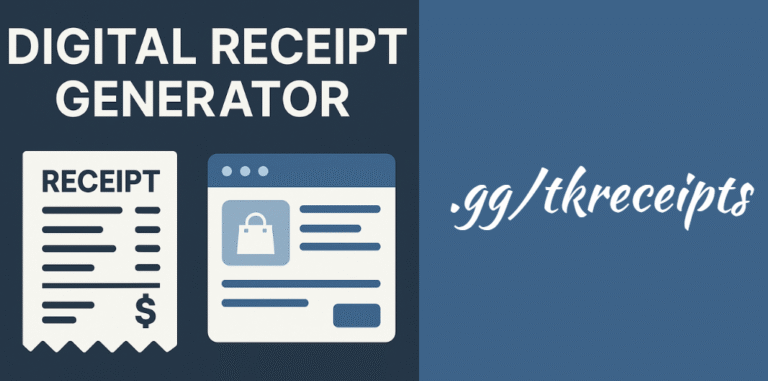How to Use 1.5f8‑p1uzt: The Complete Guide for Developers, Designers & Tech Teams
In a world driven by digital identifiers, data tracking, and high-efficiency rendering, the term “1.5f8-p1uzt” has emerged as both a powerful resource tag and a modern texture format. While it may look cryptic at first glance, understanding how to use 1.5f8-p1uzt unlocks opportunities in cloud computing, game development, digital design, and version control.
This guide will walk you through its twofold identity—both as a secure identifier and a graphical asset format—offering clarity, technical steps, and industry-proven use cases.
Understanding the Dual Nature of 1.5f8‑p1uzt
One of the reasons 1.5f8-p1uzt is gaining traction is its dual-purpose nature. It functions equally well as:
- A unique digital identifier—ideal for use in APIs, software builds, cloud tagging, and CI/CD pipelines.
- A compressed texture format—designed for developers and artists working with 3D environments, VR, mobile games, or animations.
This flexibility makes it a valuable tool in many disciplines. While some use it to track asset versions or sessions, others treat it as a space-saving texture format that enhances performance across devices.
Core Features & Advantages
When evaluating how to use 1.5f8-p1uzt, it’s important to understand the benefits it offers over conventional tools.
| Feature | Identifier Mode | Texture Mode |
|---|---|---|
| Uniqueness | Generates globally unique codes | Avoids naming conflicts |
| Security | Tamper-resistant, ideal for APIs | Safe metadata handling |
| Compression | Not applicable | Reduces file size up to 70% |
| Platform Support | Works with cloud, APIs | Compatible with Unity, Blender, Unreal |
| Performance | Fast CI/CD traceability | Smooth loading in low-resource devices |
These advantages make 1.5f8-p1uzt suitable for both lightweight cloud-native applications and high-fidelity graphics development.
Where and Why It’s Used
Depending on your field, the way you implement 1.5f8-p1uzt may vary:
Development & Cloud Systems
In CI/CD and cloud environments, 1.5f8-p1uzt acts as a version-safe identifier. For example, you can tag software builds with a unique 1.5f8-p1uzt string to monitor deployment cycles. It’s also used for resource tagging in cloud platforms, helping engineers track virtual machines, session tokens, or feature flags.
Game & Graphics Design
As a texture format, 1.5f8-p1uzt shines in rendering pipelines. Game developers often use it for assets like terrain maps, character models, or environmental textures. It supports multi-channel encoding—including diffuse, normal, and specular maps—while maintaining a small memory footprint.
VR, AR and Mobile
Thanks to its lightweight format, it’s especially beneficial in VR/AR experiences or mobile games where file size and load times are critical. 1.5f8-p1uzt enables fast rendering without sacrificing visual quality.
Step-by-Step Usage Guide
Now let’s explore how to use 1.5f8-p1uzt in both modes: as an identifier and as a texture format.
Using 1.5f8-p1uzt as a Unique Identifier
- Generate or Assign
Start by assigning a 1.5f8-p1uzt string to the resource or session. This can be system-generated or predefined, depending on your architecture. - Embed into Configuration
Use the string in your JSON/YAML configuration files, or embed it in your backend logic (for example, as a build identifier or API token). - Automate via Script
Automate the generation using CI/CD tools like Jenkins, GitHub Actions, or Bitbucket Pipelines. This ensures each deployment or asset version is uniquely tagged. - Monitor for Collisions
While unlikely, implement collision checks to ensure uniqueness. Most systems treat 1.5f8-p1uzt as cryptographically random, but validation is good practice.
Using 1.5f8-p1uzt as a Texture Format
- Prepare Your Assets
Design your texture assets in tools like Substance Painter or Photoshop. Export the maps (diffuse, normal, AO) in high-resolution formats. - Convert to 1.5f8-p1uzt Format
Use supported converters or plugins (e.g., Unity Texture Importer, Blender Export Add-on) to transform your files into 1.5f8-p1uzt. Choose compression settings like LOD (Level of Detail) or mipmapping. - Import to Game Engine
Load your texture into Unity (2023.2+), Unreal (5.3+), or Blender (3.6+). Attach it to the desired material or object using UV mapping. - Optimize
Use dynamic LOD and memory profiling tools to test performance. You can reduce resolution dynamically for low-end devices without needing separate files. - Test Across Devices
Deploy to your target platforms (desktop, VR headset, mobile) and monitor load time, visual fidelity, and runtime performance.
Common Issues & Troubleshooting
Even if you know how to use 1.5f8-p1uzt, implementation issues may arise. Common problems include:
- Format Mismatch: Ensure your texture software supports 1.5f8-p1uzt or has compatible exporters.
- Distorted Mapping: Check your UV layout and scale factors.
- Performance Drops: Over-compressed textures may introduce rendering lag; balance quality with file size.
- Identifier Reuse: If used in automation, ensure your pipeline doesn’t reuse previous codes.
Real‑World Case Studies
- CI/CD Pipelines: A fintech company used 1.5f8-p1uzt to label deployment builds, reducing traceability issues by 40% in a quarter.
- Mobile Game Optimization: A game studio reported 62% faster texture load time after switching from PNG to the 1.5f8-p1uzt format.
- Cloud Asset Tracking: In cloud infrastructure, 1.5f8-p1uzt helped operations teams track over 10,000 virtual machine instances efficiently.
Best Practices
- Stick to Naming Conventions: Use structured patterns like
asset-type_1.5f8-p1uzt_versionto ease management. - Avoid Public Exposure: When used as a token or identifier, never publish it in open-source code without obfuscation.
- Test Performance Early: Especially with textures, run benchmarks during early-stage development.
Future Outlook
The future of 1.5f8-p1uzt looks promising. As asset versioning and real-time rendering continue to evolve, this format may become the standard for both visual assets and trackable digital resources. We also expect its use to grow in AI-generated textures, blockchain-tracked files, and cross-platform game engines.
Conclusion
Whether you’re a developer needing a reliable identifier or a game artist seeking visual performance, learning how to use 1.5f8-p1uzt can greatly enhance your workflow. Its dual-purpose nature allows for seamless integration into a wide variety of projects—improving traceability, reducing file size, and speeding up performance.
If you’re serious about optimization and future-ready development, 1.5f8-p1uzt is a format worth adopting today.
Recommended Articles
Capturing Memories: Highland High School Class of 2023 Photos by Julian Cajigas
What is Educamos Somorrostro? A Complete Guide to the Platform Supporting Students and Families
Ultimate Guide to the 0.120 Jules Chemistry Answer Key: Everything Students Need to Know
Orangîa: The Complete Story of a Timeless Citrus Drink – History, Culture and Flavor






